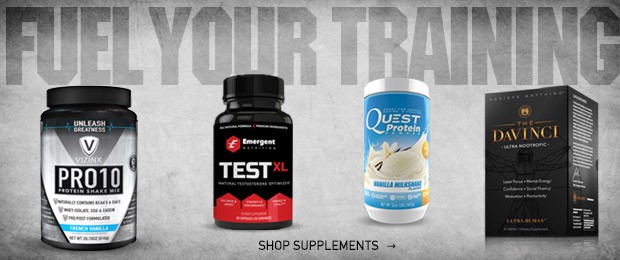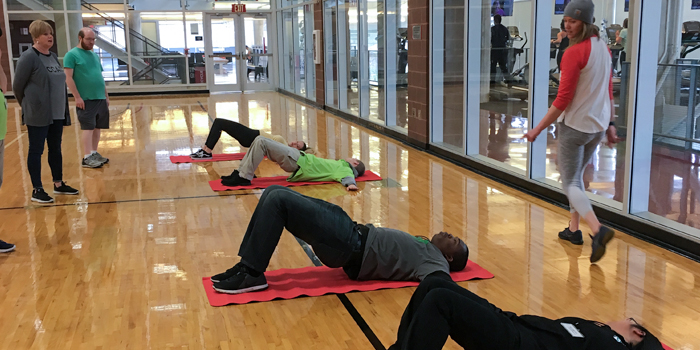
As you’ve seen this column cater to Ohio State University’s ACE and Men’s Aspirations programming, I wanted to introduce another organization that prioritizes movement and nutrition as part of their curriculum to advance young adults with special needs. Different from ACE and Men’s Aspirations, Postsecondary Access to Transition after High School (PATH) is a program housed in Dublin City Schools, where they outfit high school students with life skills to assist in planning for future employment, education, and independent living goals.
In collaboration with OSU and Karen Edison, PATH travels to the university weekly to broaden their learning experience and attain the transitional skills necessary for independence, linking students with disabilities who are still receiving school-based services with students with disabilities receiving college-level support (enter Project PLAN: Postsecondary Linking Advocacy and Navigation).
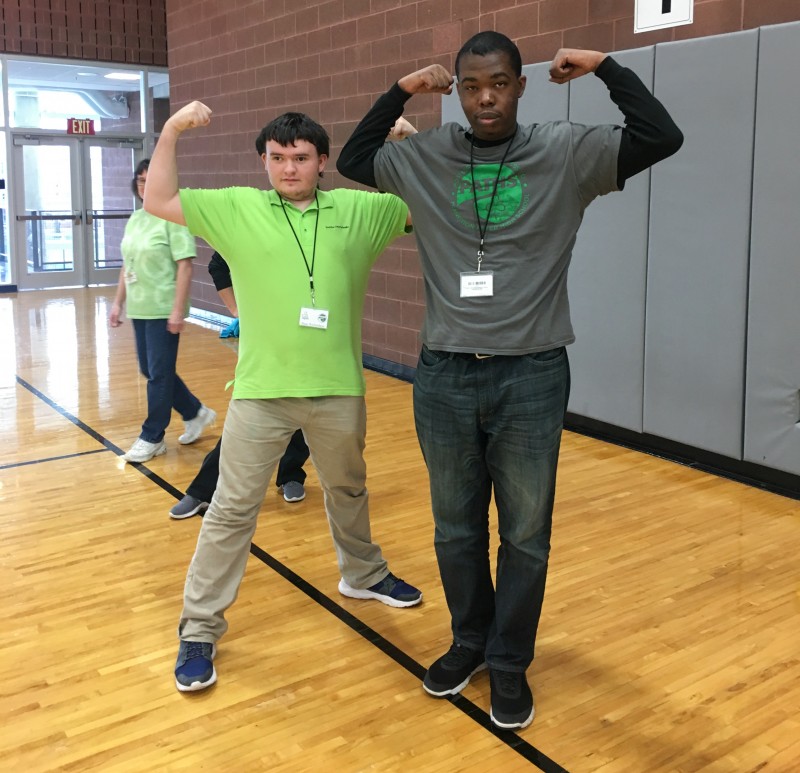
In the first lesson of this series, PLAN and I focused on two powerful life skills: exercise and consumption of healthy food. At the Recreation and Physical Activity Center (RPAC), we found an alternative use of basketballs and volleyballs for exercise, and then in the kitchen, we prepared a meal comprised of rice and beef. Browse over the entire lesson here. For our spring lesson, we returned to the RPAC using basketballs and volleyballs for exercise and in the kitchen married new ingredients together for another post-workout meal option.
RECENT: An Alternative Use of Basketballs and Volleyballs for Exercise
I wanted this workout to be more than just another workout that burns calories, ups our heart rate, and breaks down muscle tissue. I wanted it to begin to engrain the idea of progression. Therefore, using our interests, strengths, and weaknesses based on the first workout, we’d be able to create a string of workouts utilizing a base of tools in a single environment to continually perform, feel, and look better.
Here’s what we accomplished in the gym and kitchen within a two-hour window to illustrate some progression basics:
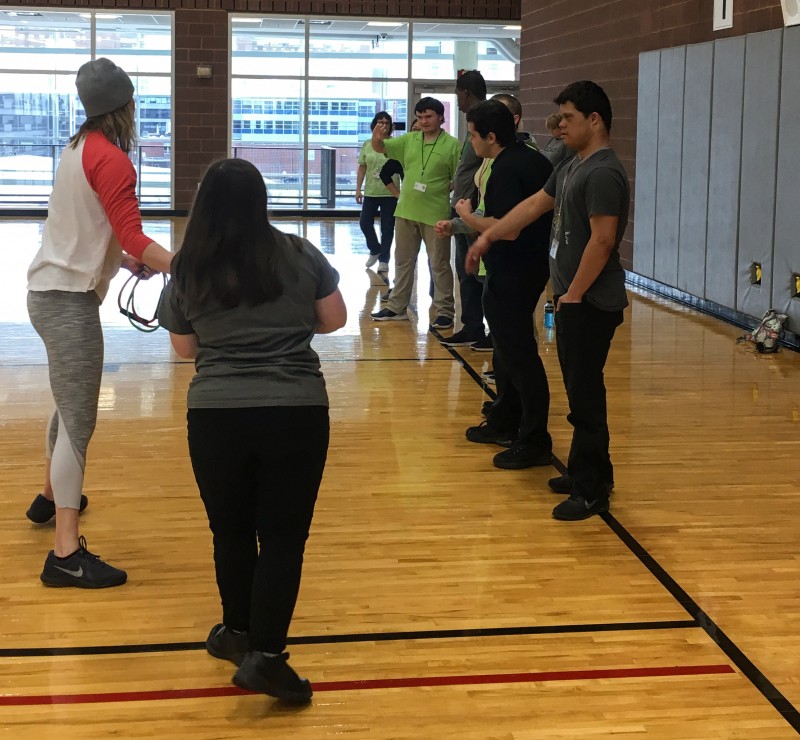
Gymnasium
Warm-up
After a bus ride from Dublin City Schools to the RPAC and taking off a few layers to welcome the incoming warmth of spring, we began with a meet and greet in the gymnasium. As a few new faces mixed with a lot of familiar faces in a familiar setting, we exchanged laughable and prideful memories from our previous workout. As you can imagine, this positive energy spread through everyone (the new and existing students, the new and existing staff support, the interns, and myself) and a sense of ease, competence, and bubbling excitement was high. As a whole group, we discussed how today’s mission would be to make our workout more challenging from the previous workout based on our individual strengths and weaknesses. We talked about a few of the exercises we performed last time (heads were nodding) and how we’d tweak them just slightly to be stronger today.
Using the bold black lines on the glossy gymnasium floor as boundaries, we went through 10 different drills to slowly get everyone engaged, acclimated, and warm. Different from last time, we elongated the drill space and added bands to our legs for lateral movements.
Work Stations
As you remember from the previous lesson, I had to drastically adjust the pace of the session and minimize the amount of work we could accomplish to eliminate confusion and rushing. For this workout, I set up four stations so as a whole group, we could take our time and focus on quality over quantity while also adding an element of progression.
Station 1
- Volleyball/Basketball/Hand Squeeze x 15 seconds
For this station, we split the eight students into two groups of four. Therefore, two students from each group were performing the exercise simultaneously. We started off with the volleyball (a familiar circumference), then a basketball (a slightly larger circumference), and finally removed all implements to squeeze our own hand.
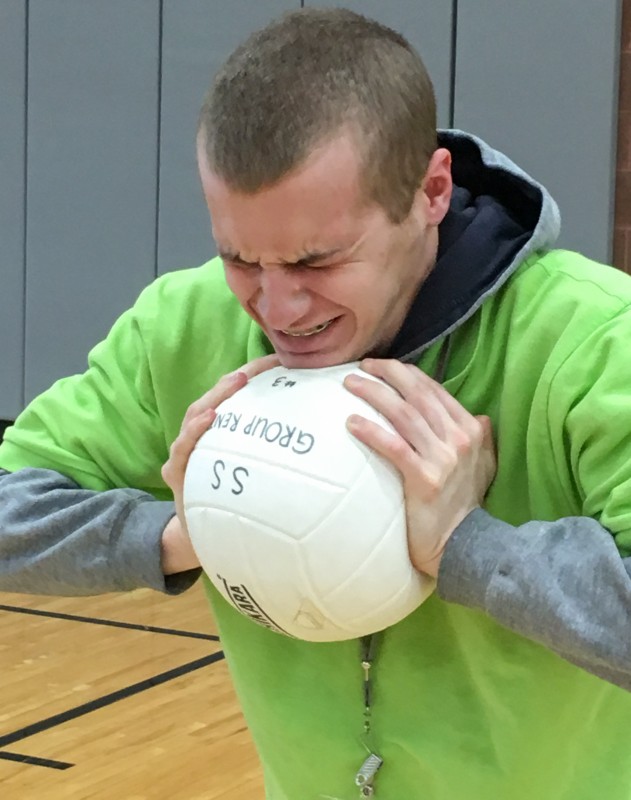
Changing the circumference just slightly proved to be a challenge for the students as they began to articulate a preference for one set over another. In addition to the moving circumferences, our squeeze increased from 10 seconds to 15 seconds, including manual resistance for all three sets.
Station 2
- Laying Hip Lift on Mat x 4 reps
In the previous session, jumps were all over the place in terms of coordination and strength. Rather than jump this time, we regressed to the floor for laying hip lifts to strengthen our lower back, hips, glutes, and hamstrings.
I love this exercise because it slows everything down, and the students are mindful of their muscles and what’s working and when. Combining this exercise with the banded laterals from our warm-up, I know these students will be jumping in no time!
It took us some time for setup (knee position, arm position, where to squeeze, what to lift), but after our first set, the students really excelled here. For each set, we performed four reps and by the final set, we began to incorporate pauses at the top.
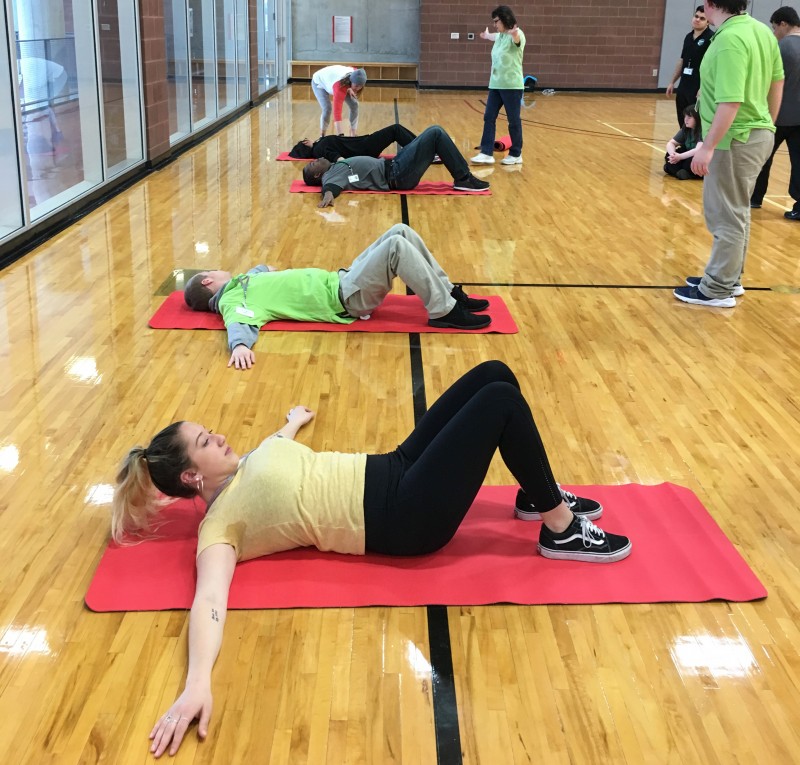
Station 3
- Wall/Bench Push-Ups x 80 seconds
For this station, we performed push-ups with the help of the wall. As a whole group, we started there and increased our pressing time from 60 seconds to 80 seconds. The students who showcased really good form and felt like things were too light were challenged to use a bench (the one student who was ready for the floor from the previous session was absent).
At the bench, we got into position and just held the position at the top. The students could feel the added resistance at the top, according to their exclamations. We held the top position for five seconds for each set. Baby steps! Like last time, based on the mix of new students, I demonstrated floor progressions of the push-up, so they'd observe how Wall Push-ups translate to the floor for a more significant challenge.
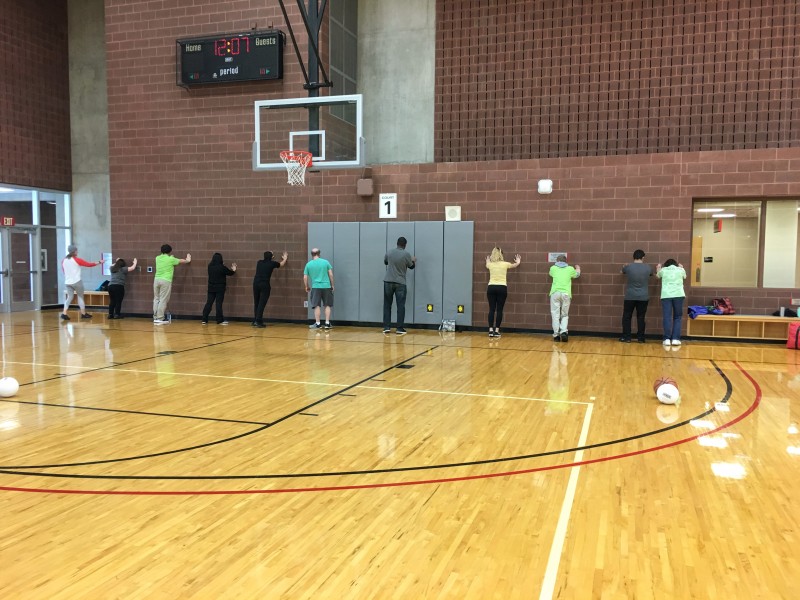
Station 4
- Partner Basketball Drills
As I learned during the previous lesson, the students love basketball. I gauged this based on our free time. Before moving to basketball free time, I wanted this final station to work on an array of ball drills.
Each group of four was appointed an intern to perform the following drills: dribbling, chest passes, two dribbles with chest pass, bounce passes, and two dribbles with bounce pass. We alternated hands for dribbling and had to really focus on listening skills to move from one drill to another based on the varying level of steps within each drill.
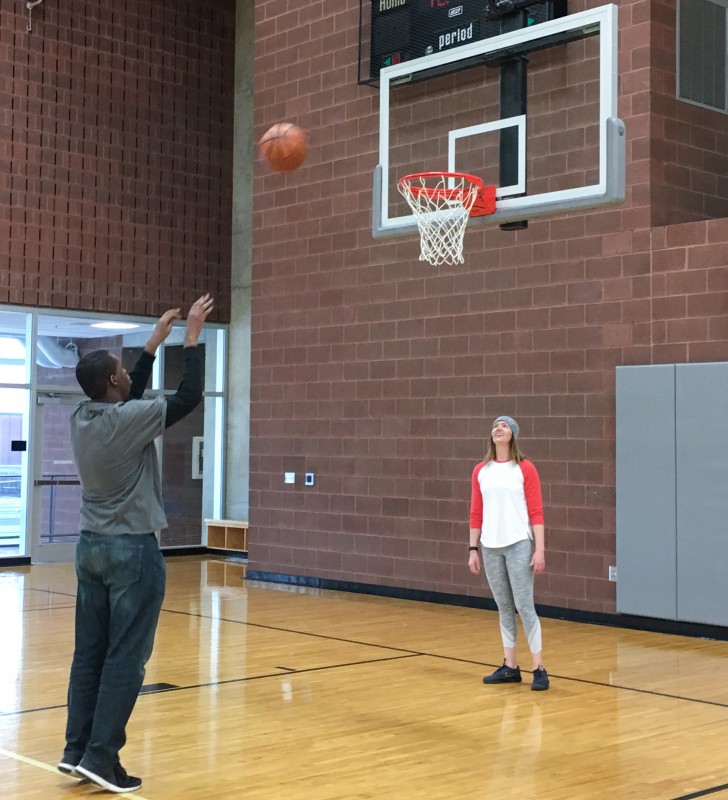
Basketball Free Time
Remaining in our two groups of four, free time escalated to half court play incorporating the drills above and shooting the ball in the basketball hoop.
Cooldown
As a group, we walked around the gym three times to lower our heart rate and to cool down while discussing our accomplishments before heading into the kitchen.
Kitchen
From the gym to the kitchen, we reiterated the importance of post-workout nutrition — this time with the help of a sponge! We passed around a dry and used sponge so the students were able to feel this hard structure that had no bend. As we created any type of movement with the sponge, its fibers began to split, and it eventually tore in half (the students were in exaggerated dismay!).
We then fed the sponge its energy requirements comprising of food and soap. We passed around the now hydrated and supple sponge so the students could feel this hard structure turn into a structure with flex. No longer could we easily tear the sponge, and the sponge could properly do its job.
This was my cue to compare our body’s energy requirements to that of the sponge and ask a few questions: “What if we’re not eating healthy food and drinking plenty of water? How do you think our muscle fibers will work? Are we setting ourselves up for injury or failure? Will we have enough energy to perform our work to get stronger?”
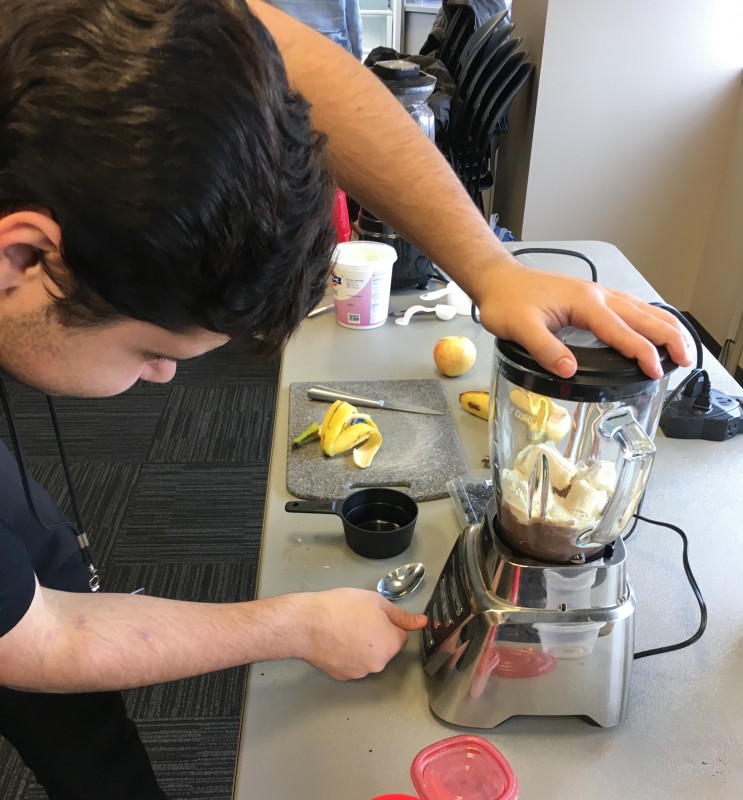
It was through the help of the sponge that the students were able to connect the nutritional concepts and personalize the importance of food and water. Away from the gas stove, spatula, and skillet, we then prepared and enjoyed yogurt and fruit smoothies for our post-workout meal using a blender. Here are the recipes we followed and sampled:
Smoothie Recipes
Blueberry Smoothie
- 1 C Ice
- 1 C Yogurt
- 1 C Blueberries
- 1 Tsp Cinnamon
- 2 TBSP Honey
Strawberry Smoothie
- 1 C Ice
- 1 C Yogurt
- 1 C Strawberries
- 1 Tsp Cinnamon
- 2 TBSP Honey
Banana Smoothie
- 1 C Ice
- 1 C Yogurt
- 1 C Banana
- 2 TBSP Peanut Butter
- 1 TBSP Cocoa
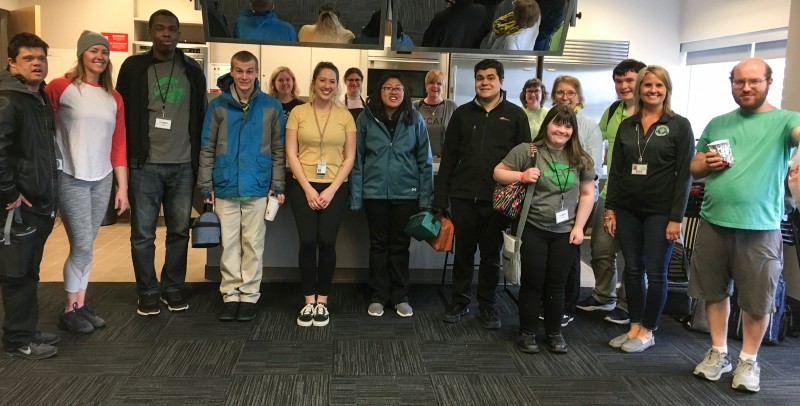
With the many amenities OSU provides at the RPAC, it would’ve been easy to create another brand-new workout with different recreational equipment. But a more powerful lesson for these students, rather than starting at ground level in terms of skill, was to observe their strengths and weaknesses and then create a plan to enhance those strengths and weaknesses to reach a new level of skill mastery.
Thank you to Sean, Bryant, Nate, Jordan, Orien, Molly, Bo, Harry, Madison, Taylor, Tema, Karen, Cheryl, and Katie for all your enthusiasm, and I look forward to learning more with and about you next time!









